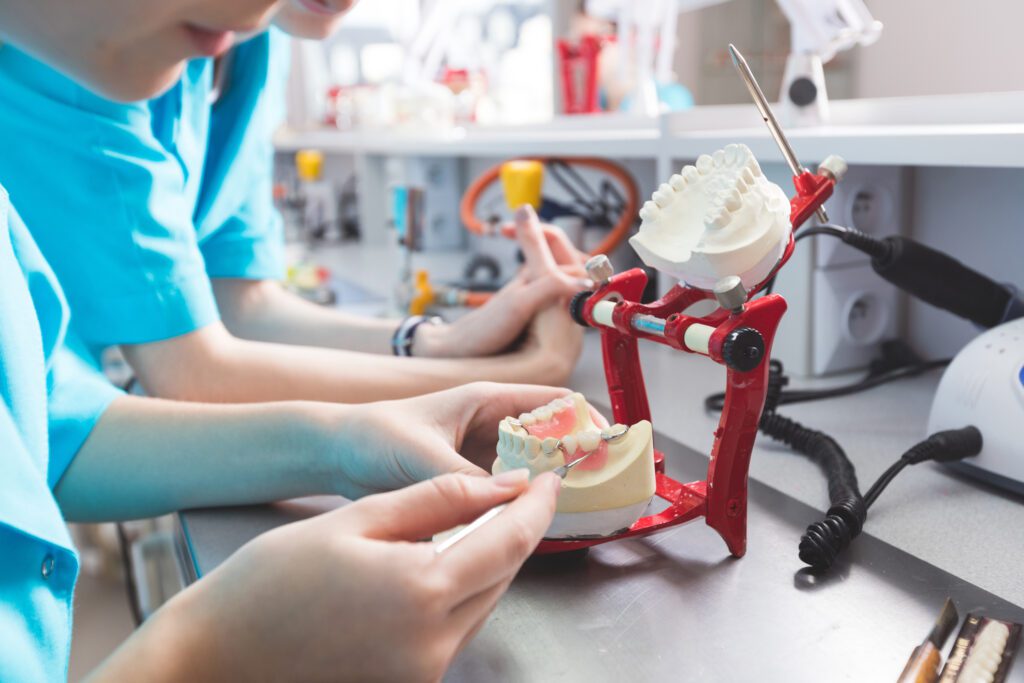As we know them now, dental implants are a product of technological advancements and not a recent innovation.
The history of dental implants can be traced back to 2500BC when ancient Egyptians attempted to create a substitute tooth with gold, and most of the implant innovations to the 1900s.
However, Egyptians weren’t the only ones contributing to the development of dental implants. In around 2000BC, Ancient Chinese used carved bamboo pegs to replace missing teeth.
These are just two of the earliest known examples of dental implants we know and benefit from today. Here, we trace the evolution of implant dentistry through time into the present in our San Antonio, TX office.

Timeline of Evolution of Dental Implants
There is countless evidence of using varying materials to replace missing teeth throughout history. Some of these are backed by ancient scriptures, and others by archaeological discovery.
1000BC
The body of an Egyptian King from 1000BC is found with a copper peg hammered into his upper jaw to replace a missing tooth. Various Egyptian manuscripts talk about toothaches and contain notes about the search for a solution.
500BC
The Etruscans (Ancient Italians) started soldering gold bands and oxen bones to replace missing teeth. During the same period, Phoenicians (Ancient Middle Easterners) started using gold wire to stabilize loose teeth because of periodontal or gum problems.
300BC
The Phoenicians successfully developed the earliest known version of a dental bridge with a tooth carved from ivory and stabilized with a gold wire.
600AD
The Mayans (Ancient Mexicans) successfully created the first dental implant using shells to replace the teeth on the lower jaw. Images of the discovery show the bone firmly fused around the implant, evidencing a successful implant.
800AD
The first stone implant was created and implanted in the mandible or lower jaw in the Honduran culture.
1500 to 1800
Throughout this period, researchers collected teeth from underprivileged residents across Europe for transplantation. During this period, doctors also worked with grave robbers, asking them to collect teeth from the corpses.
They experimented with several materials, including gold, silver, iridium tube, and porcelain.
One researcher also experimented by implanting a still-developing tooth in a rooster’s mouth. The tooth firmly fused into the rooster’s comb, but the blood vessels merged into the tooth’s pulp, indicating a successful transplant.
1913
A hollow cylinder of iridio-platinum soldered with 24k gold is used as an artificial root.
1930
The Stock brothers develop a Vitallium screw to use as root replacement and serve as an anchor for the replacement tooth. The brothers are known to find the first biocompatible metal for dental implants.
1938
Dr. P.B. Adams introduces and patents an endosseous implant.
The 1940s
The father of modern implantology, Formiggini, developed a stainless steel post-type endosseous implant. The dental implant allowed the bone to grow into it and featured a spiral structure allowing for solid fusing.
1960 to 1970
Throughout the era, implant innovation peaked with researchers experimenting with materials and shapes. Most implants in this area were screw-shaped. They used stainless steel, aluminum, cobalt, and chromium materials.
1978
In 1978, Dr. P. Brånemark introduced the first known titanium screws, or fixtures as he called them. Though the first well-documented procedure, the experiment failed as the patient saw severe jaw and bone deformities.
However, later work by Brånemark introduced the concept of osseointegration, and further modification to the implant showed better success rates.
Implant Dentistry in San Antonio, TX
Today, dental implants, dental crowns, dental bridges, All-on-4, and many other restorative dentistry procedures result from much of the work done in the 1900s.
When done right by an expert, the procedures are entirely safe with little to no side effects.
Explore more aspects of implant services on our website:
- What Are Dental Implants?
- Benefits of Dental Implants
- All On 4
- Single Dental Implants
- Multiple Dental Implants
- The Dental Implant Procedure
Restore Your Smile With Implants
At Advanced Dental Associates, we provide numerous restorative dentistry services to help our clients replace missing teeth or restore damaged teeth.
Contact us to see if you are a candidate for dental implants at 210-361-6847.
